The exciting morphological and functional differences of a hammer, a single multipurpose tool.
Hammers have existed in one form or another since before the evolution of homo sapiens, we know this to be true by the examples of extant species who use hammer-like objects to achieve their own specific goals through tool use.
Though hammers fall into a singular use tool category they are anything but a single–use tool. There is a hammer for every trade. In some trades a hammer has a multitude of uses and a diverse range of different parts.. Let’s get into it.
Woodworking Hammers
1.Claw Hammer
- The Claw hammer ranges in weight from 8oz -20oz and often exhibits a multitude of handle materials, designs and lengths and a smooth striking face.
- It is best known for its curved shaped claw or peen on the rear side of the hammer.
- Its curved metal tines are used to increase the leverage needed to extract nails, staples or anything else imbedded in wood or other material.
- Claw hammers are the most versatile hammer in its class.
2. Rip Hammer/Smooth Face Hammer
- Rip hammer also known as a smooth face hammer have many of the same attributes as the claw hammer with one exception, its claw is straight instead of curved which allows for nail extraction in tight or hard to reach areas.
- It comes in a wide variety of handle and neck materials and steel types.
- Some designs exhibit lanyard holes in the handle, nail starters on bell and face or magnets on the cheek.
- Applications of rip/smooth face hammer range from demolition, framing, finish carpentry, and woodworking but the real limits of this hammer are your imagination.
3. Framing Hammer
- The framing hammer in recent years has gone through an incredible re-engineer and design process. While keeping the original anatomy of the framing hammer intact some brands have moved towards increased ergonomic dynamism.
- From curving handles and necks, altering the geometry of the angle striking head to the utilization of lighter materials like titanium to decrease the fatigue of the user while increasing the striking force.
- It’s most identifiable characteristic is the checkered face or waffle face affectionately known in my shop as the “Union Stamp” lol.
- The checker face leaves an indelible mark in the framing timbers while adding a tremendous amount of anti-slippage while striking.
4. Electricians Hammer
- Most electricians I have met never have a hammer and always have to borrow mine . I’m not sure many know that there is a hammer out there specifically for electricians. That being said, there are some fascinating features like an elongated throat allowing it to hammer out access holes in junction boxes, and claw tines specifically designed to remove romex staples and fiberglass neck with an over–molded rubber handle.
- The hammer ranges in weight from 16–18oz. Interestingly enough it reminds me a bit of a Japanese framing hammer.
5. Lath Hammer
- Originally used for roofing, plaster and lathe. Now it is used primarily for sheetrock.
- The notch on the axe style blade is intended for nail pulling.
- The throat of the hammer is elongated face is usually checkered or waffle for increased control for nailing.
- The axe edge is used for cutting lath wood, roofing paper and scoring sheetrock on the fly. This allowed a tradesmen to carry essentially a multi-tool on his or her tool belt creating a more efficient workflow.
- The hammer handle typically has an over–molded rubberized handle for shock absorption.
- Affectionately known as the “Persuader”
6. Hatchet Hammer
- The slightly larger version of the lath hammer. The hatchet hammer has a broader axe head with a nail puller.
- The hammer face can be smooth or checked.
- The handle is typically longer than a lath hammer.
- This would be an ideal camping axe.
- Sometimes bigger is better.
7. Slaters Hammer
- The slater’s hammer is forged in one single piece from crucible-cast steel.
- Has a 12-inch leather handle.
- It consists of a keyhole for pulling nails and a sheer interior edge for cutting slate.
- A spike peen with a sharp point at one end for punching holes in slate and a hammer face for driving nails.
- It is a handy tool for the fine art of slate roofing.
8. Cross Pein Pin Hammer
- A lightweight version of the cross peen hammer.
- It is used for nailing small nails into wood and the cross peen wedge is used to set the nail.
- Once the nail is set, the typical hammer face is used to finish the job and fully set the nail.
- Similar to a finish hammer or tack hammer.
9. Upholstery Hammer
- A specialized upholstery hammer for upholstery tacks and small nails.
- This hammer also was used in the theatrical industry for stretching canvas on frames.
- One of the hammerheads is usually magnetized to help this process, while the other has a standard small impact area for delicate hammering.
- Interestingly enough you hold the tacks in your cheek and spit the tacks onto the magnetic head to set the tack into the surface.
10. Lineman’s Hammer
- The Lineman’s Hammer varies considerably in design however its most common use is to hammer heavy gauge staples and lags into pressure treated utility poles.
- Some resemble Club Hammer or Mini-sledge, still others resemble a heavy duty rip hammer.
- Some are dual headed 40oz forged steel alloy.
- The Rip Hammer style has some cleverly designed nail and staple puller options.
- Most designs have a textured striking face for increased traction.
Mallets
The Mallet is an incredibly useful hammer and ranges in design and use case. Mallets are hammers that are made with mostly non metallic materials. That is the main differentiator between mallets and other hammers.
- There are wood mallets for striking tools
- Rubber mallets for adjusting stubborn surfaces
- Non-marking mallets for sensitive surfaces
- Differentially faced combination mallets or Combo Mallets
- Dead blow mallets.
- A mallets is a type of hammer with a large striking face.
- The increased surface area of the striking face decreases potential damage to the surface it is striking.
- This is achieved by the mallet head being made of non metallic materials like rubber, wood, UHMW polyethylene, polyurethane, HDPE polyethylene.
- These durable lighter materials allow the user to safely strike a myriad of materials and surfaces.
- Dead blows and combo faced mallets usually have a steel head interior with lead shot or sand in the head to increase the weight and reduce the bounce and a striking surface that is non-marking.
1. Rubber Mallet
The rubber head produces softer blows, ideal for jobs where you need to avoid breakage such as when tapping ceramic tiles into place during tile installation.
2. Dead Blow Mallet
Dead blow mallets aim to minimize both the impact force from the strike and potential damage to the surrounding area. They typically have a solid rubber or part hollowed out head filled with sand.
3. Soft Face Mallet
Soft face mallets are made to bend materials such as wood, metal and plastic without damaging the surface or breaking the material.
4. Joiners Mallet
Brilliant for heavy chisel work, a joiner’s mallet features a large head with two angled faces.
Demolition Hammers
1. Sledge Hammer
- Affectionately known as the “attitude adjuster” this hammer is used in demolition, foundational construction and masonry. It is a hammer that relies on weight of the striking head and pure brute force to get the job done. Whether you are pile driving massive tent stakes or breaking up big rocks into smaller ones, or using it to adjust something heavy, sledge hammers are incredibly useful tools.
- The striking heads are solid rectangular shaped steel with square striking faces however they can vary in morphological shape and size.
- The heads weight ranges from 3lbs known as a club hammer to a massive 20lbs.
- The handle length ranges from 12”-36”. The larger hammers will come with a slip on or integrated over–molded rubber bumper just below the striking head. This is to prevent damage or breakage to the handle should you overstrike and miss your intended target.
- A common misconception when it comes to sledge work is the heavier the better, however there is a definite trade off between weight and physicality.
- The heavier the hammer, the more physically taxing. It all depends on the user and the job required.
- Though it can be done this is not the best hammer for hanging pictures in your living room.
2. Splitting Maul (Hammer)
- If an axe and a sledgehammer got together the splitting maul would be their love child.
- The anatomy of a maul’s striking head is made specifically for splitting logs along the grain.
- This is not an axe for chopping wood. It would take a lot of effort to chop wood across grain with a maul.
- The mauls head has a steep wedge angle on the splitting end coupled with the weight of the sledge style back end make for a dynamic and effective tool for spitting logs. Bonus it’s also a hammer.
3. Railroad Spike Maul Hammer
- Hammer made famous by The Great John Henry Legend
- Spike Mauls are essentially sledge hammers with elongated heads.
- They range in weight from 8 to 12lbs with 30”- 36” long handles.
- They have elongated double faced striking heads.
- The head is typically over 12” long to allow the user to drive railroad spikes on the opposite side of the rail from one position.
- Most common design is the “Bell Spike Maul” where the heads are cylindrical in shape.
Metalworking Hammers
1. Blacksmith Pein Hammer
- The cousin of the sledge hammer is the Blacksmith’s cross pein hammer. It’s the epitome of business up front party in the back. Forged high carbon steel head sets this hammer apart from its demo brother.
- These hammers come in a variety of head styles offering the blacksmith many multi use options most notably is the cross peen hammer.
- The Cross Peen usually has a square or geometric shaped head with a flat striking face with a wedged horizontal pein for finer work.
- Whether you choose the French, Swedish, German or American style most come in a variety of weighted striking heads for heavy hot and cold forging work to delicate detail work.
2. Ball Peen Hammer
- Ball Peen Hammers are typically forged high carbon steel and ground to finish. It has a round bell and flat striking hammer face.
- It gets its identifier by the opposite side of the hammer striking face called the Peen or Pein.
- The Peen is hemispherical and commonly used for intricate rounding work and gasket forming.
- Ball peen hammers are often found in a machinist, metal formers and blacksmiths toolbox. In the family of ball peen there are many variants that handle different specific tasks.
3. Blocking/Bossing Hammer
- Blocking hammers partners with a leather bag filled with lead shot or a stump with a negative or positive form can make quick work of stretching and forming metal into different shapes.
- Blocking hammer heads are differentially shaped from one end to the other.
- There are a few variants in head materials each material yielding pros and cons regarding use case. Wood and metal heads are similar in shape.
- They have large hemispherical heads at one end and rounded flat faces at the other end.
- The plastic version are large hemispherical at one end and conical with a smaller hemispherical striking surface at the other.
4. Raising Hammer
- This hammer is used mainly by metalsmiths that cold form sheet metal.
- Utilizing an additional form called a stake this hammer is used on the outside of the object when metal forming. The technique is called raising.
- The hammers anatomy has tapered throats at either end with an oblong bell and rounded strike faces. In the hands of an expert the limits of what can be formed and how are boundless.
5. Forming Hammer
- The opposite of the raising hammer is the forming hammer.
- It is used by metalsmiths to cold form and shape the interior of an object in sheet metal.
- The strike faces of a forming hammer are hemispherically rounded and usually match the curve of the form.
6. Brass Hammer
- Essentially a sledge hammer with a cylindrical head is made of solid brass.
- Its solid brass head ranges in weight from 2lbs- 20lbs like its steel cousin.
- Used on hard metal materials due to its dead blow anti–bounce qualities
- It will deliver the force needed without damaging or marring hardened metals like steel.
- Brass is nonferrous and is non-sparking when striking making it safe for use near combustible materials.
7. Tinner’s Hammer
- Tin hammers were designed to creating rolled edges and seams in tin and other thin metals.
- The square head avoids marring the metal while riveting and the cross peen end is used to ‘peen’ down a rivet when it can’t be used.
8. Welders Hammer/Chipping Hammer
- A welder or chipping hammer features a wide flat chisel-shaped head and a pointed head, both of which can be used to remove the waste or ‘slag’ left behind from a welding job.
- The spring handle allows for shock absorption and flexibility.
9. Planishing Hammer
- Also known as Jewelers Planishing Hammer
- Planishing hammers are dual headed metal shaping tools
- If used properly in conjunction with a planishing stake or a lead shot bag the hammer can flatten, smooth and polish metals surfaces.
- One striking face is ultra smooth flat with softened rounded edges.
- One striking face has a softly domed convexed striking face for texturing.
10. Boiler Scaling Hammer
- A classic dual headed metalworking tool for removing deposits and descaling of metalwork
- It is horizontal chiseled peen on one striking face and a vertical chiseled peen striking face on the other end
- The head is made of a crucible high carbon hardened steel and coated in rust inhibitor coating
11. Toolmakers Hammer
- The standout feature of a toolmakers hammer is the built in magnifying glass.
- The hammering face and ball peen surround the magnifying glass.
- Allows for a quick verification of small gauges, calipers, and poorly annotated drawings.
12. Chasing Hammer
- A unique looking hammer, chasing hammers are built with a thin handle at the hammer end which thickens as it moves down to improve balance during use.
- The hammering face is large for flattening metal and the ball peen side provides the ability to rivet.
- These hammers are ideal for working with metal, especially when shaping jewelry.
13. Auto-Body Hammer
- Auto–body hammers usually come as a set with small anvil forms.
- Shrinking/Skinning hammer – Cross-hatched face for shrinking work on large, flatter surfaces. Skinning head for installing door skins, working high crown areas and character lines.
- Cross-Chisel Hammer – Chisel head provides access to tight inside corners. Smooth, convex face for general finishing.
- Pick Hammer – Blunt point for raising low points and finessing character lines. Smooth, general-finishing face.
14. Copper Hide Hammer
- A copper hide hammer features two distinct hammerheads.
- The copper side can deliver high impact blows.
- The hide face produces a blow that avoids marring the surface of your work material.
- Especially useful tools when working with car panels.
Masonry Hammers
1. The Stone Mason’s Hammer/Brick Hammer
- Used by stonemasons, a brick hammer its capable of both shaping and splitting stone, brick and concrete. It has a sharp chiseled peen with a square smooth face.
- The advantage is having a chisel with enough weight that you do not need an additional hammer or two hands to cut or break rocks.
- There is a consistent theme with all hammers you will find.
- Most hammers do not perform only one task unveiling the necessity and convenience of applying one tool for multiple tasks.
- Geologist’s use this hammer type for digging and removing material around rocks and fossils as well as splitting and chipping rock.
2. Scutch Hammer
- Solid Forged from high carbon steel the scutch hammer comes as a double scutch or single scutch option.
- The scutch has a hardened steel insert that is either a chisel or comb toothed edge.
- It is used by brick layers and stone masons to remove decaying mortar, cut stone and brick, dress and shape stone and brick.
- You can buy replaceable scutch comb and chisel inserts.
3. Bushing Hammer
- Bushing hammers have double or single hammer head.
- The double head has deep cut toothed striking face on one end and a finer toothed face on the opposite end.
- The striking faces made of tungsten carbide welded to the hammer head. Carbide is both add texture to concrete and stone.
4. Prospectors Hammer/Pick Hammer
- A favorite of geologists, this hammer sports a flat smooth or textured striking face.
- The peen tapers to a single spike-shaped claw which proves very useful during intricate groundwork.
- The handle is short and engineered to minimize hotspots while maintaining a comfortable grip.
Specialized Hammers
1. Rock Climbing Hammer
- Also known as big wall hammers, wall hammers, and aid hammers.
- This hammer specializes in driving steel pitons into rock faces for mountain climbing routes.
- They are also handy for initial placement of fixed anchors.
- Frequently used for removing pitons and stubborn climbing gear.
- This type of hammer has been featured many times on the silver screen over the years.
2. War Hammer
- The war hammer came to prominence during the age of armor.
- As armor became more complete and protective swords became less effective when slashing.
- Carried by foot soldiers the large toothed striking face combined with a sharpened spike was devastating for all who met it on the battlefield.
- There are countless design iterations ranging from practical to hand carved works of art.
- The neck of the hammer is forged steel mounts to safeguard the handle from breaking if overstrike occurs.
- Some designs featured a spike at the top of the hammer as well.
We’re always looking to improve this list, so if we must one off let us know in the comments below!
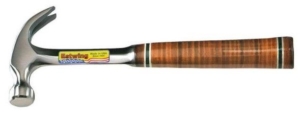
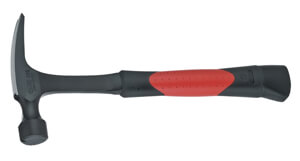
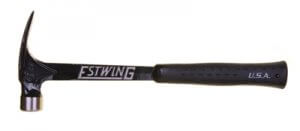
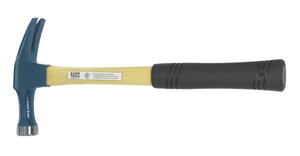
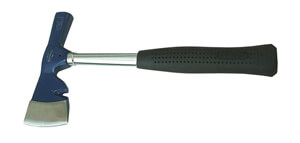
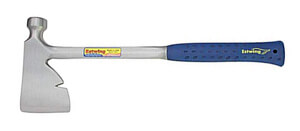
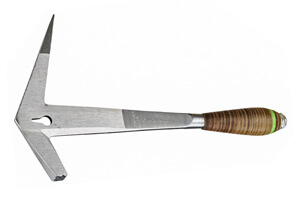
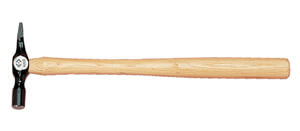
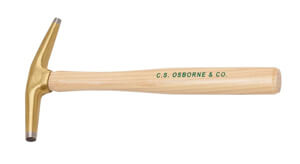
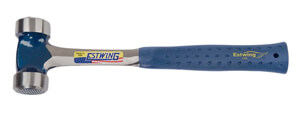
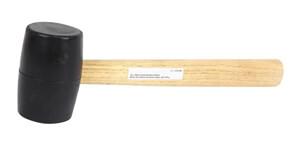 The rubber head produces softer blows, ideal for jobs where you need to avoid breakage such as when tapping ceramic tiles into place during tile installation.
The rubber head produces softer blows, ideal for jobs where you need to avoid breakage such as when tapping ceramic tiles into place during tile installation.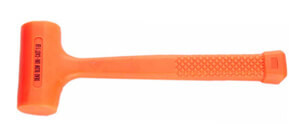 Dead blow mallets aim to minimize both the impact force from the strike and potential damage to the surrounding area. They typically have a solid rubber or part hollowed out head filled with sand.
Dead blow mallets aim to minimize both the impact force from the strike and potential damage to the surrounding area. They typically have a solid rubber or part hollowed out head filled with sand.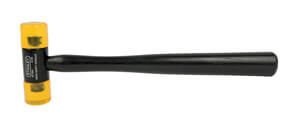 Soft face mallets are made to bend materials such as wood, metal and plastic without damaging the surface or breaking the material.
Soft face mallets are made to bend materials such as wood, metal and plastic without damaging the surface or breaking the material.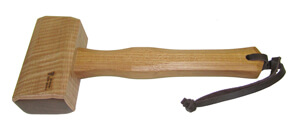 Brilliant for heavy chisel work, a joiner’s mallet features a large head with two angled faces.
Brilliant for heavy chisel work, a joiner’s mallet features a large head with two angled faces.
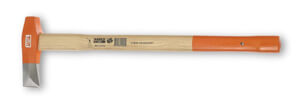
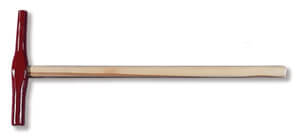
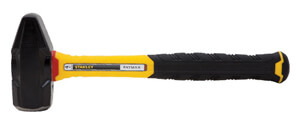

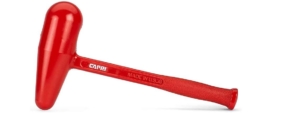
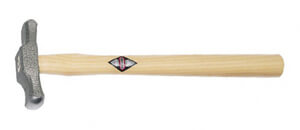
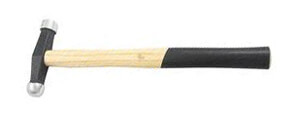
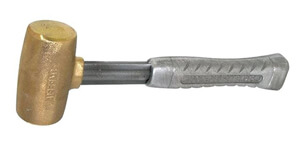
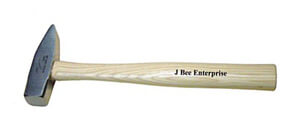
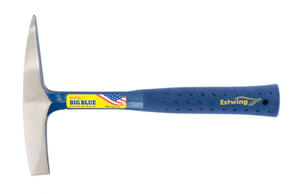
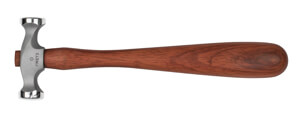
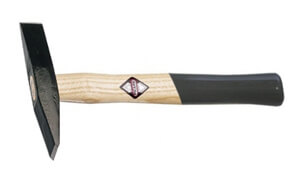
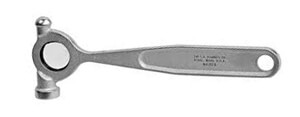


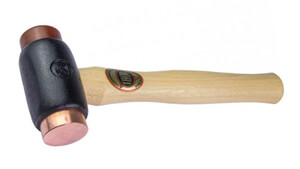
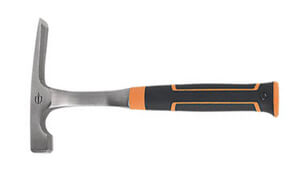
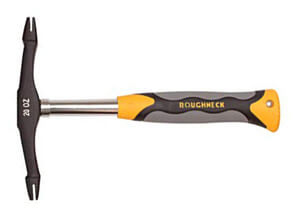
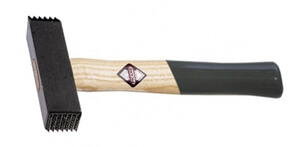
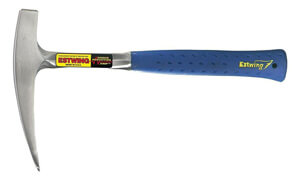
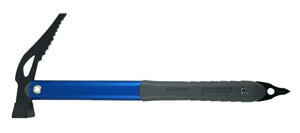

Reader Interactions